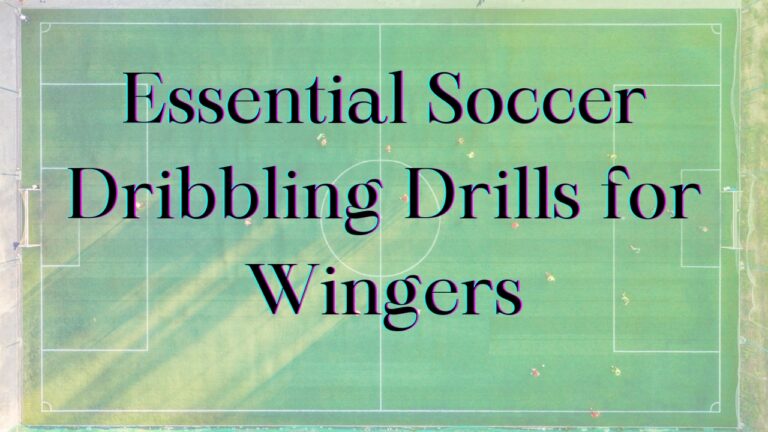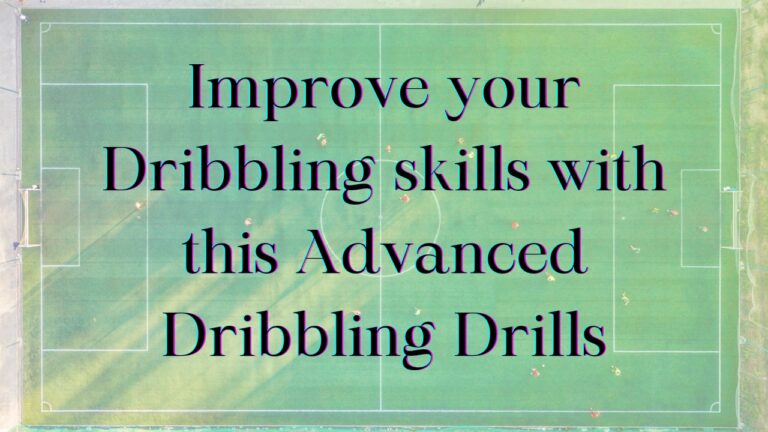As a young soccer player learning the art of defending, few things are more important than mastering proper positioning. Many goals scored against youth teams can be traced back to defenders being caught out of position.
Smart, disciplined positioning prevents attacking players from finding dangerous space while allowing you to win back possession. Let’s examine the key elements of positioning young defenders should focus on.
Align Your Body Shape Correctly
The stance and shape of your body while defending influences your ability to react. Here are some tips:
Stay side-on so you can see the field and opponent while remaining balanced
Maintain a low center of gravity with knees bent and on the balls of your feet
Don’t overcommit – be patient and wait for the attacker to make the first move
Keep your arms out for balance but avoid flailing excessively
Keeping your body aligned effectively prevents you from being turned or unbalanced while allowing quick reactions in any direction. This compact, controlled posture is essential for youth defenders.
Mark Dangerous Areas in Your Zone
An essential element of positioning as a defender is proactively marking opponents who enter your area or zone on the field. Here are some key marking principles:
Identify the most dangerous attackers in central channels and mark them first
Watch for late runs from midfielders into the box and pick them up
Communicate constantly with fellow defenders to pass on marks smoothly
If an attacker drops deep, decide whether to follow or pass them on
Marking tightly but also handing off marks at the right times prevents free opponents in dangerous areas. You must recognize impending threats early and mark them aggressively to shut them down.
Use body positioning to slow the attacker and shepherd play sideways
Don’t allow attackers to turn-angle approach to force one-way
On crosses, get goal-side and attack the ball first
Mastering marking skills and passing on assignments fluidly while avoiding gaps takes practice but gives the defense stability.
Provide Cover and Balance
In addition to handling your marking responsibilities, you must also provide cover for teammates and keep the defense balanced. Here are some tips:
If a teammate is pulled out of position, shift over to fill the open space
When cover is needed, move over promptly but don’t fully commit
Adjust your positioning to maintain a defensive shape if gaps appear
Don’t stray too far from defenders nearest your zone
Providing timely cover and balancing the overall team shape requires excellent awareness and communication. Scan the field constantly to identify where cover is most needed. Plugging holes proactively prevents attackers from isolating defenders in space.
As an attacker makes a run at your teammate, be ready to slide over or drop deeper to help. Balancing individual and team responsibilities develops cohesive defending.
Focus on Shapes and Angles
Positioning yourself effectively as a defender also involves paying attention to shapes and angles:
Curve your movement runs so you are not moving in straight lines
Angle your approach to force the attacker toward the sideline
Delay opponents by angling body and guiding play sideways from danger
Funnel attacks into less threatening areas away from the goal
Smart defenders steer play and limit options by cutting off passing lanes and forcing predictable angles.
Stay focused on body shape and proximity angles as plays develop. Forcing attackers where you want them to go beats lunging straight for the ball. Maintaining optimal angles gives you the upper hand.
Anticipate Plays and React Quickly
The mental side of positioning involves reading the game intelligently to anticipate plays. Here are some tips:
Study opponent tendencies to read cues and get a jump on the next pass
Gauge body language to see where an attacker or midfielder will move next
Recognize when shape allows seams for through balls and get goal-side
If beaten, don’t give up – turn and sprint to recover your position
Sharpening your ability to read and react quickly will put you steps ahead. Visualize offensive patterns to hone your anticipation skills. Work on explosive recovery speed when caught slightly out of position.
Stay mentally engaged and hop on those quick first steps to shut down developing plays. Savvy defenders predict danger ahead of time and snuff it out.
Vary Positioning Based on Game State
The ideal positioning as a defender also changes depending on the current game state:
When pressing high up the field, push your line further forward
Protecting leads late, dropping deeper, and limiting space behind you
On set pieces, stick tight to zone and man-marking assignments
In closing minutes, stay compact and focused on preventing equalizers
Adjusting positioning based on the score, time remaining, and momentum is a sign of an aware defender. Move up the field as a unit to condense space when necessary. Other times, soak up pressure in a deep, organized line.
Remain flexible and move your line of confrontation up or back depending on your team’s tactics and the situation. Keep focused on the final whistle.
Conclusion
Mastering proper positioning requires young defenders to be disciplined, communicate constantly, and think proactively. Focus first on proper stance and body shape when isolated. Provide cover and balance team shape whenever gaps arise. Control angles and anticipate plays to snuff out attacks early. Adjust positioning based on the game state.
With dedicated practice and experience, defensive positioning skills will become instinctual over time. Developing these fundamental abilities will elevate any motivated youth player’s defensive prowess dramatically.
Related Post: 5 Ways to Dramatically Improve as a Soccer Defender
Author






